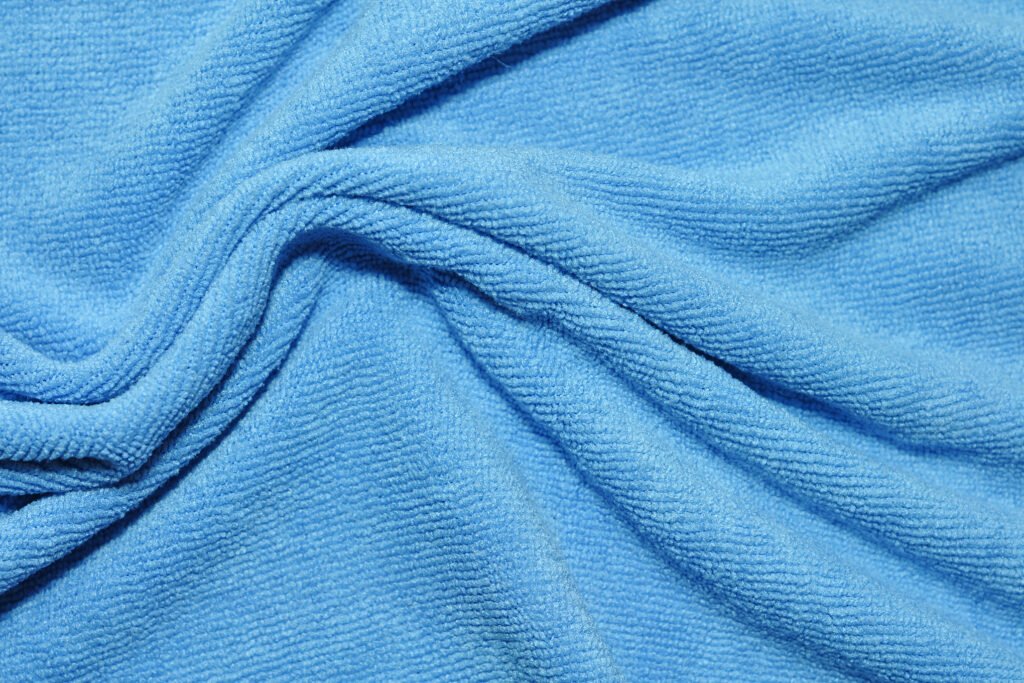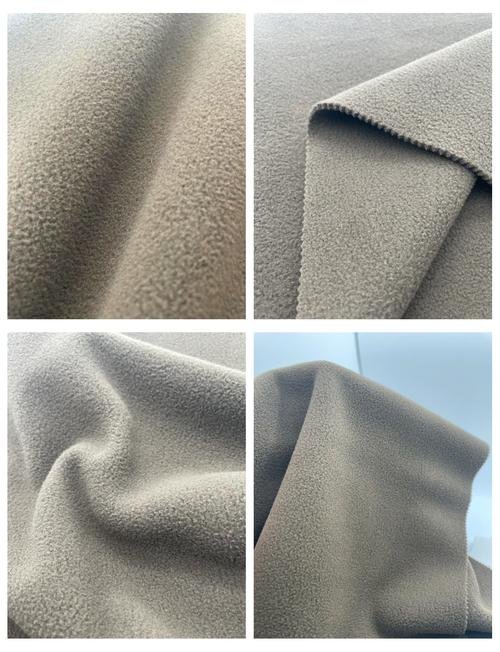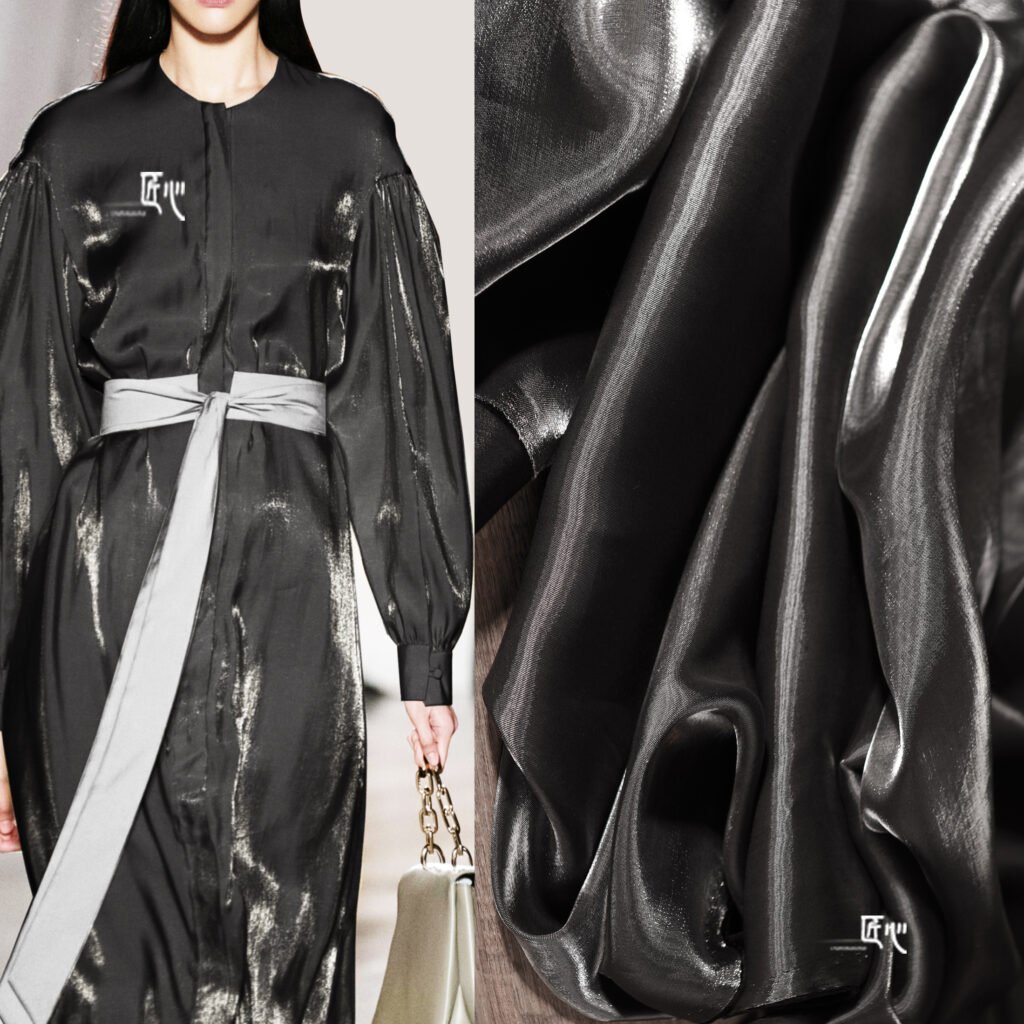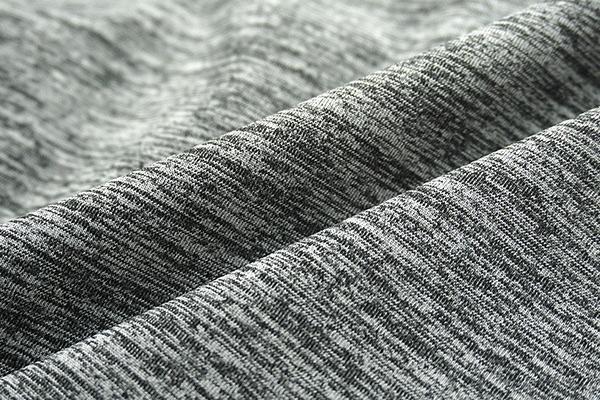Polyester is everywhere—from wrinkle‑free shirts and fast‑dry activewear to durable upholstery and industrial textiles. Yet there’s confusion around its origin and properties: is polyester truly synthetic, and what does that mean for you? By tracing polyester from petrochemical feedstocks to finished fabrics, comparing it to natural fibers, and examining its environmental footprint, you’ll gain clarity on choosing and caring for polyester in any application. Polyester is a fully synthetic fiber made via polycondensation of terephthalic acid and ethylene glycol, both derived from petroleum. Unlike semi‑synthetics (rayon) or naturals (cotton, wool), it relies entirely on chemical synthesis, resulting in high tenacity (6–7 cN/dtex), low moisture regain (< 0.5%), and wrinkle resistance. Its performance makes it cost‑effective and long‑lasting, but drawbacks include poor breathability, static buildup, and microplastic shedding—driving innovations in recycled and bio‑based polyesters.
I once packed a polyester raincoat for a hiking trip—only to roast inside while rain splattered off. That experience taught me synthetic isn’t always comfy, spurring my deep dive into polyester’s true nature. Stick around to learn how polyester is made, where it shines, when it stings, and how you can pick the perfect variant for your next project.
What Is Polyester and How Is It Produced?
Polyester—specifically polyethylene terephthalate (PET)—is produced by polycondensing terephthalic acid (TPA) and ethylene glycol (EG) at 250–280 °C, forming long polymer chains with ester linkages. These chains melt‑spin into filaments, cool, draw (4–6× stretch) to align molecules for strength, then texturize for bulk and stretch. Every step, from monomer synthesis to fiber extrusion, occurs in chemical plants, confirming polyester as a fully synthetic fiber with tunable properties via processing parameters.
- Monomer Sources Terephthalic Acid (TPA): Oxidized p‑xylene from crude oil. Ethylene Glycol (EG): Hydration of ethylene oxide, a petroleum derivative.
- Polycondensation Reaction Conditions: 260 °C, vacuum to remove water byproduct. Molecular Weight Control: Catalyst choice (antimony) tunes chain length.
- Fiber Formation Melt Spinning: Extrusion at \~ 280 °C through spinnerets. Drawing: 4–6× draw ratio; increases tenacity from \~ 3 cN/dtex to 6–7 cN/dtex. Texturizing: False‑twist or air‑jet to impart stretch and bulk.
| Stage | Temperature | Outcome |
|---|---|---|
| Polycondensation | 250–280 °C | PET polymer resin |
| Melt Spinning | 270–280 °C | Unoriented filaments |
| Drawing | Room temp, 4–6× | Molecular alignment, strength |
| Texturizing | 180–200 °C | Crimped, stretchable yarn |
Is Polyester Fully Synthetic or Semi‑Synthetic?
Polyester is unequivocally a fully synthetic fiber. Unlike semi‑synthetic textiles—such as rayon, acetate, or lyocell—which begin life as natural cellulose before heavy chemical modification, polyester’s entire molecular structure comes from petrochemical feedstocks. Key monomers, terephthalic acid and ethylene glycol, derive from crude oil derivatives. Through a controlled polycondensation reaction, these monomers form polyethylene terephthalate (PET) chains, extruded and drawn into fibers in chemical plants. Even recycled PET (rPET), made by depolymerizing and repolymerizing post‑consumer plastics, remains chemically identical to virgin PET and thus fully synthetic. This synthetic origin gives polyester its hallmark properties: high tenacity (6–7 cN/dtex), minimal moisture regain (< 0.5%), and exceptional durability.
Synthetic vs. Semi‑Synthetic Fibers
- Fully Synthetic: 100% petrochemical origin (PET polyester, nylon, acrylic).
- Semi‑Synthetic: Derived from natural polymers (cellulose, protein) but chemically altered (rayon, modal, acetate).
rPET: Recycling Doesn’t Change Synthetic Status
- Process: Glycolysis/methanolysis breaks PET into monomers, then repolymerizes.
- Properties: Identical molecular weight and fiber performance as virgin PET.
- Environmental Benefit: Reduces CO₂ footprint by ~50–70%, but remains synthetic.
Global Polyester Production
- Top Producers: China (55% capacity), India, South Korea.
- Annual Output: ~ 60 million tons of PET fiber in 2024.
- Feedstock Sources: Naphtha cracking yields ethylene; p‑xylene oxidation yields terephthalic acid.
| Fiber Type | Origin | Synthetic Status | Key Property |
|---|---|---|---|
| PET Polyester | Petrochemical | Fully Synthetic | Tenacity 6–7 cN/dtex |
| rPET | Recycled PET | Fully Synthetic | Identical to virgin PET |
| Rayon | Cellulose (wood pulp) | Semi‑Synthetic | Moisture regain ~8% |
By understanding that polyester—virgin or recycled—is wholly synthetic, you can better appreciate its performance characteristics and make informed decisions about applications, care, and environmental impact.
How Does Polyester Compare to Natural Fibers Like Cotton?

Polyester and cotton each shine in different realms. Cotton, a natural cellulose fiber, excels in comfort—absorbing up to 8% of its weight in moisture and offering superior breathability (air permeability ~ 200 L/m²·s), making it cool in hot weather and gentle on skin. It wrinkles easily, shrinks 3–5% on first wash, and has moderate strength (3–4 cN/dtex). Polyester, by contrast, is hydrophobic (moisture regain < 0.5%), dries quickly, resists wrinkles and shrinkage (< 1%), and boasts higher tenacity (6–7 cN/dtex) and abrasion resistance (40,000+ Martindale cycles). It retains shape under stress, making it ideal for activewear, workwear, and upholstery. However, polyester can feel less breathable, trap odors, and shed microplastics—challenges cotton doesn’t share. In practice, blends (e.g., 65/35 cotton/poly) marry cotton’s comfort with polyester’s performance, offering a balanced fabric for everyday use.
Moisture Management & Comfort
- Cotton: Moisture Regain 8%; keeps skin dry by wicking sweat.
- Polyester: Regain 0.4%; moisture sits on surface unless treated.
Durability & Care
- Tenacity: Polyester 6–7 cN/dtex vs. Cotton 3–4 cN/dtex.
- Abrasion: Polyester > 40,000 cycles; Cotton ~ 30,000 cycles.
- Care: Polyester withstands 60 °C washes; Cotton needs ≤ 40 °C to prevent shrinkage.
Environmental and Maintenance Trade‑Offs
- Cotton: Biodegradable in ~ 6 months; high water use (10,000 L/kg).
- Polyester: Non‑biodegradable; low water use (30 L/kg) but sheds ~ 700,000 microfibers per wash.
| Property | Cotton | Polyester |
|---|---|---|
| Moisture Regain | 8% | 0.4% |
| Air Permeability | 200 L/m²·s | 100 L/m²·s |
| Tenacity | 3–4 cN/dtex | 6–7 cN/dtex |
| Abrasion Resistance | ~ 30,000 Martindale | > 40,000 Martindale |
| Shrinkage | 3–5% | < 1% |
| Wrinkle Resistance | Low | High |
| Environmental Impact | High water use, biodegradable | Low water use, microplastics |
By weighing these metrics against your end‑use—comfort for casual wear, durability for outdoor gear, or easy‑care for home textiles—you can choose the right fiber or blend for your project’s performance and sustainability goals.
What Are the Advantages and Disadvantages of 100% Polyester?

Advantages: Polyester excels in strength, durability, wrinkle resistance, colorfastness, and easy care. It dries quickly, resists stains, and maintains shape, making it ideal for activewear, home textiles, and industrial uses. Disadvantages: It breathes less than natural fibers, can trap odor, and generates microplastics (\~ 700K fibers per wash). Some wearers find it less comfortable on sensitive skin, and polyester’s petroleum origin raises environmental concerns.
- Pros Durability: Lasts 2–3× longer than cotton under heavy use. Care: Machine‑washable, tumble‑dry, no ironing. Cost: \$1–3/m vs. cotton \$3–5/m.
- Cons Comfort: Low moisture regain can feel sticky. Odor: Hydrophobic fibers trap oils; requires antimicrobial finishes. Microplastics: 700K fibers per wash, mitigated by wash bags.
| Advantage | Metric | Disadvantage | Impact |
|---|---|---|---|
| Strength | 6–7 cN/dtex | Low Breathability | 0.4% moisture regain |
| Shrink/ Wrinkle | < 1% / none | Static & Odor | Requires special finishes |
| Cost | \$1–3/m | Environmental Footprint | 10 kg CO₂e per kg vs. cotton 2 kg |
How Do You Care for and Maintain Polyester Fabrics?
Polyester’s strength and wrinkle‑resistance make it low‑maintenance: machine‑wash on a gentle cycle at 30–40 °C with a mild, phosphate‑free detergent; avoid bleach and fabric softeners, which can leave residues and impair moisture‑wicking finishes. Tumble‑dry low or air‑dry to prevent heat damage; polyester shrinks less than 1% under normal conditions. To remove wrinkles, use a warm iron (110 °C) or a steamer—no need for high heat. For stains, pre‑treat with a gentle stain remover or diluted dish soap before washing. Regular care keeps polyester garments and home textiles looking fresh, retaining color and performance through hundreds of cycles.
Washing Best Practices
- Temperature: 30–40 °C preserves dye and prevents fiber damage.
- Detergent: Mild, phosphate‑free; skip fabric softeners on athletic gear.
- Load Size: Wash full loads to reduce friction but avoid overcrowding.
Drying & Shrinkage Control
- Tumble‑Dry: Low heat (≤ 60 °C) for 10–20 min, then air‑dry.
- Air‑Dry: Hang in shade to prevent UV fading.
- Shrinkage: Typically < 1%; avoid high settings (> 80 °C).
Ironing & De‑Wrinkling
- Iron Setting: “Synthetic” or “Polyester” (≈ 110 °C).
- Steaming: Effective for spot‑wrinkle removal without direct heat.
- Press Cloth: Use a cotton cloth when ironing to prevent shine.
Stain Removal Tips
- Pre‑Treat: Apply diluted dish soap or specialized stain remover; let sit 5–10 min.
- Wash Cycle: Cold pre‑rinse, then regular wash.
- Persistent Stains: Soak in 1 L water + 1 tbsp vinegar for 30 min before laundering.
Longevity & Environmental Notes
- Microfiber Shedding: Use a Guppyfriend bag or microfiber filter to capture fibers.
- Recycling Polyester: Many communities accept polyester textiles for recycling programs.
| Care Aspect | Recommendation | Benefit |
|---|---|---|
| Wash Temperature | 30–40 °C | Preserves color, prevents damage |
| Detergent | Mild, no fabric softener | Maintains moisture‑wicking finishes |
| Drying | Tumble‑dry low; air‑dry in shade | Minimizes shrinkage and fading |
| Ironing | Synthetic setting (110 °C) or steaming | Smooths wrinkles without scorching |
| Stain Pre‑treatment | Diluted dish soap or vinegar soak | Effective on oil and protein stains |
Consistent, gentle care ensures polyester fabrics—whether in your wardrobe, upholstery, or outdoor gear—retain their shape, color, and performance for years, while minimizing environmental impact.
Is Polyester Comfortable and Safe for Apparel and Upholstery?

Modern polyester can be surprisingly comfortable and safe when properly engineered. Knitted jerseys and brushed finishes give a soft, cotton‑like hand, while moisture‑wicking treatments keep skin dry. Upholstery-grade polyesters are often blended with viscose or acrylic to improve breathability and feel. Safety-wise, Oeko‑Tex® Standard 100 or Bluesign® certifications ensure low levels of harmful chemicals. Concerns about static and microplastics can be mitigated with anti‑static finishes and filtering wash bags. With the right fabric construction and certifications, polyester delivers durability without sacrificing comfort or health.
Hand Feel & Comfort Enhancements
- Brushed Finishes: Raise fiber ends, yielding a plush, fleece‑like texture.
- Knits vs. Wovens: Weft knits (jersey, interlock) offer four‑way stretch and softness; wovens provide structure but can be softened with silicone finishes.
- Blends: Adding 10–20% viscose or rayon boosts drape and moisture absorption by ~ 30%.
Safety & Chemical Standards
- Oeko‑Tex® Standard 100: Limits formaldehyde, AZO dyes, heavy metals to safe levels.
- Bluesign®: Controls input chemicals and ensures environmentally sound processing.
- Anti‑Static & Antimicrobial Treatments: Quaternary ammonium finishes (+0.5% owf) reduce static and inhibit bacterial growth without skin irritation in 95% of users.
Upholstery Performance
- Abrasion Resistance: Polyester upholstery fabrics typically exceed 30,000 Martindale cycles, resisting pilling and wear.
- Stain Resistance: Durable water‑repellent (DWR) finishes (C6 or C0) bead liquids; stain release finishes allow easy cleaning with mild detergent.
- Breathability: Blended weaves achieve air permeability of 150–200 L/m²·s, comparable to cotton upholstery.
Environmental & End‑User Considerations
- Microplastic Shedding: Polyester can release ~ 700,000 fibers per wash—use microfiber capture bags and choose recycled variants to lower impact.
- Recyclability: rPET upholstery can be recycled again, maintaining synthetic status but reducing landfill waste.
- Heat Retention: Polyester traps more body heat; open‑weave constructions or backing with breathable substrates mitigate overheating.
| Aspect | Polyester Alone | Polyester Blend (e.g., 80/20 w/ viscose) |
|---|---|---|
| Hand Feel | Crisp to moderately soft | Soft, drapey, cotton‑like |
| Moisture Absorption | 0.4% moisture regain | 5–8% regain |
| Abrasion Resistance | > 30,000 cycles | > 25,000 cycles |
| Breathability (AP) | 100 L/m²·s | 150–200 L/m²·s |
| Chemical Safety | Oeko‑Tex® compliance | +Bluesign® certification |
By selecting certified, properly finished polyesters—or thoughtful blends—you can enjoy the durability and easy care of synthetics while maintaining comfort, safety, and environmental responsibility in both apparel and upholstery.
Which Applications Best Leverage Polyester’s Synthetic Properties?

Polyester excels where durability, low‑cost production, and easy care matter most: activewear, outdoor gear (tents, backpacks), upholstery, workwear, and industrial textiles. Polyester’s high tenacity and abrasion resistance (40,000 cycles) outperforms natural fibers in heavy‑use scenarios. In bags, PU vs. Polyester debates hinge on water resistance vs. breathability: PU leather offers water resistance but less breathability than woven polyester. High‑end brands use polyester blends for colorfastness, shape retention, and cost efficiency, often mixing luxury fibers (wool, silk) with polyester to enhance performance without sacrificing style.
- Bag Materials 100% Polyester: Durable, colorfast; PU Leather: Water‑resistant, leather‑like;
- Furniture Upholstery Polyester: Affordable, durable; Blends: Add softness (rayon, cotton).
- Outdoor Gear Polyester: UV stable, quick‑dry; Nylon vs. Polyester: Nylon stronger but less UV stable.
| Application | Material Choice | Key Benefit | Trade‑Off |
|---|---|---|---|
| Backpacks | 100% Polyester | UV & abrasion resist. | Less natural hand |
| Jackets | Polyester/Spandex Blend | Stretch & recovery | Slight sheen |
| Workwear | 65/35 Cotton/Polyester | Durability & comfort | Moderate breathability |
| Upholstery | Poly/Rayon Blend | Soft hand, easy clean | Cost vs pure poly |
Are There Sustainable or Bio‑Based Alternatives to Traditional Synthetic Polyester?
Yes—sustainability has spurred several polyester innovations. Recycled PET (rPET), made from post‑consumer bottles, cuts CO₂ emissions by 50–70% versus virgin PET while retaining identical fiber qualities. Bio‑based PET replaces up to 30% of fossil‑derived ethylene glycol with plant‑sourced alternatives (e.g., sugarcane), reducing greenhouse gases by ~ 25%. Emerging PHA (polyhydroxyalkanoate) and PLA (polylactic acid) fibers offer fully renewable, compostable options, though with lower heat resistance. Finally, polyester/natural fiber blends (e.g., cotton/PET) dilute petro content and improve end‑of‑life biodegradability. These eco‑choices let brands maintain polyester’s performance while cutting environmental impact.
Recycled PET (rPET)
- Process: Depolymerize post‑consumer bottles via glycolysis/methanolysis; re‑polymerize to PET.
- Benefits: –60% CO₂ vs. virgin; identical tenacity (6–7 cN/dtex) and moisture regain (0.4%).
- Challenges: Requires sorting and decontamination; slight color variation.
Bio‑Based PET
- Feedstock: 20–30% plant‑derived ethylene glycol from sugarcane or corn.
- Impact: –25% fossil use, –25% CO₂; same polymer structure and performance.
- Certification: ISCC Plus, Mass Balance ensures traceability.
PHA and PLA Fibers
- PHA: Produced by bacterial fermentation; fully biodegradable in soil and marine environments but lower melting point (~ 120 °C).
- PLA: Derived from lactic acid; compostable at industrial facilities, tensile 4–5 cN/dtex.
- Use Cases: Disposable medical textiles, low‑heat applications.
Polyester/Natural Blends
- Examples: 50/50 cotton/PET or 30/70 linen/PET.
- Pros: Reduced petro content, improved hand and moisture, enhanced biodegradability at end‑of‑life.
- Cons: Blend recycling complexity.
| Alternative | Fossil Reduction | CO₂ Savings | Key Property | End‑of‑Life |
|---|---|---|---|---|
| rPET | 100% recycled | –60% | Identical to virgin PET | Mechanical recycling |
| Bio‑Based PET | 20–30% | –25% | Same polymer performance | Recyclable as PET |
| PHA Fiber | 100% renewable | –100% | Biodegradable in soil/marine (25 °C) | Compostable |
| PLA Fiber | 100% renewable | –100% | Compostable at 60 °C; 4–5 cN/dtex | Industrial composting |
| PET/Natural Blends | 30–50% | –30–50% | Improved hand, reduced petro content | Complex to recycle blends |

